In the 1960s, listeners from Los Angeles to London were charmed by Shirley Ellis and her catchy tunes. Archival footage shows her poised in dazzling gowns cinched at the waist just so, the vigor and verve of her vocals holding audiences rapt.
The Congress Records songstress had a single on the Billboard Hot Rhythm and Blues Top 10 list in January 1965, alongside the Temptations’ “My Girl,” Marvin Gaye’s “How Sweet It Is (to Be Loved by You),” the Supremes’ “Come See about Me,” and Sam Cooke’s “A Change Is Going to Come.” Her hit still resounds, although Ellis is too often regarded as an American music history footnote, not a legend like those contemporaries.
The song, inspired by a rhyming game she played as a child, has stayed in rotation through the years in television, movies, commercials, and cover versions. Runway models walked to its rhythms in a Stella McCartney fashion show to rave reviews from Women’s Wear Daily the same year that a major retailer’s commercial featured a family singing it on a road trip. Howard Stern says singing the ditty’s his “schtick with kids.” Academy Award winner Jessica Lange performed a show-stopping rendition on American Horror Story that catapulted the oldie-but-goodie to meme status on TikTok. And the song’s title continues to be invoked as a tortured metaphor for trade articles about everything from corporate rebranding efforts to the merits of monogramming.
Yes, “The Name Game” endures. Odds are you know the tune. Something in its rhythm and rules—remove the first consonant of a name; replace it with a B, F, or M; then add a bo, fo, fee, fi, or mo in the designated spots—keeps the song humming along. Despite prognostications that it was a “novelty tune” destined to disappear when the freshness of its nonsensical humor wore off, it lives on. The inventive wordplay and nods to the hand-clapping, jump-roping culture of black girlhood also won Ellis credit for ushering in a new form of American music. Her picture is the image in an encyclopedia entry documenting “proto-rap,” the pre-1980s stylistic forebear to hip-hop’s beats, rhymes, and banter. I’d argue that she’s also a standard bearer for another movement that she scarcely could have anticipated—early support for phonological awareness.
What Is Phonological Awareness?
Phonological awareness is the conscious ability to recognize and manipulate sound segments within words, and it’s right up there with oral language and letter knowledge as a pillar of literacy. It’s critical to understand that spoken words can be divided into smaller sounds in order to read in alphabetic writing systems like English. Letters exist to represent, in writing, the sequences of sounds that we hear in speech. When kids struggle with reading, an underlying and overlooked cause can be that they have difficulty processing speech sounds. Yet most parents don’t think to devote time to bolstering kids’ sensitivity to the sounds in words.
To do our part, parents need to begin paying attention to how words can be sliced and diced into different sound units, such as syllables and less-familiar units like—stay with me here—onsets, rimes, and phonemes. Syllables are pronunciation units that include a vowel sound and optional consonant sounds before and/or after the vowel. For example, the word soccer has two syllables and basketball has three. An onset is the initial consonant or consonant cluster sound in a word—the /t/ sound in team, for example, or the /sp/ sound in spoon. Some words like air don’t have an onset. The rime unit (fraternal twin to rhyme), by contrast, is the vowel sound within a syllable plus any consonant sounds that follow the vowel. For example, the “eam” in team. Phonemes (e.g., /t/, /ē/, or /m/) are the smallest speech sound units in English—and there are forty-four.
If that sounds like a lot to learn and teach, you can take comfort in a couple of things. One, kids don’t need to know all these terms and details. You just need to help them perceive and manipulate the different sounds, which can happen through play. Second, kids’ awareness of sounds within words generally develops in a predictable sequence, from larger units like syllables to smaller and smaller ones. And within each size unit there’s a range of ways kids can manipulate the sounds, from rudimentary to complex. Plus, all of this development happens over the course of years, so you’ve got plenty of time to get up to speed on what skills to nurture now—and next.
In terms of order, children typically recognize that breakfast has two syllables before grasping that it starts with a /b/ sound or that it has eight sounds in all—/b/, /r/, /e/, /k/, /f/, /i/, /s/, and /t/. Their ability to blend, segment, and recombine sounds within words also develops with time and experience. Kids can usually compare and contrast words (e.g. notice that cup and pup rhyme) before they can come up with rhyming words themselves or name the sounds within words. And little ones typically can blend /c/ /u/ /p/ sounds to say cup before they can break down cup into its three sounds.
Think of these different phonological awareness activities (isolating, blending, segmenting, etc.) at the syllable, onset, rime, and phoneme levels as different presentations of the same fundamental ability. Knowing that these sound-analysis skills are all located along a single continuum will help you see how your child is progressing on the road to literacy, according to Jason Anthony, a professor at the University of South Florida who specializes in language and literacy acquisition. In general, children who do well at noticing, pondering, and manipulating sound units within words early on are going to continue to do well and learn to read without difficulty. “The reason it’s important to understand that all of these things fall under phonological awareness is that you can actually play with your child, do these sound activities, and encourage their literacy development long before they ever reach formal reading instruction,” he explains.
It also means that professionals can identify early which kids are likely to have more difficulty. “We don’t have to wait until third grade to decide, ‘This child is failing school, he can’t read,’” Anthony explains. “Now we’re in a much better place to identify a child at risk of reading failure at kindergarten entry or even preschool.”
Edited and reprinted with permission from Reading for Our Lives by Maya Payne Smart, published by AVERY, an imprint of Penguin Publishing Group, a division of Penguin Random House, LLC.
Copyright © 2022 by Maya Payne Smart.
Get Reading for Our Lives: A Literacy Action Plan from Birth to Six
Learn how to foster your child’s pre-reading and reading skills easily, affordably, and playfully in the time you’re already spending together.
Get Reading for Our Lives
For better or for worse, school experiences shape our ideas of what learning looks–and feels–like. But teaching your own children can happen in the course of everyday family activities and needn’t mimic the formality and distance of traditional classrooms with a parent at a whiteboard and the child behind a desk (or computer). Family learning should be much more organic and conversational than that. And when it comes to teaching the foundational but often-overlooked pre-reading skill of phonological awareness, it can definitely be fun and on the fly, too.
Phonological awareness is the conscious ability to recognize and manipulate sound segments within words, and it’s right up there with oral language and letter knowledge as a pillar of literacy. It’s critical to understand that spoken words can be divided into smaller sounds in order to read in alphabetic writing systems like English. Letters exist to represent, in writing, the sequences of sounds that we hear in speech. When kids struggle with reading, an underlying and overlooked cause can be that they have difficulty processing speech sounds. Yet most parents don’t think about spending time on kids’ phonological awareness.
The main way for parents to help kids develop phonological awareness is through play. It’s not drill and kill. It’s singing “The Name Game.” It’s talking in Pig Latin. It’s playing I Spy with beginning sounds or rhyming words instead of colors. (I spy something that rhymes with tike. Yes, the bike!)
When you recite nursery rhymes, you’re heightening kids’ sensitivity to the syllables and the beginning, middle, and ending sounds within words. The stress patterns of classics like “Jack and Jill Went up the Hill” help them learn about syllables and rhymes, important phonological awareness skills. And the alliteration in “Peter Piper Picked a Peck of Pickled Peppers” accentuates the /p/ sound and distinguishes it from surrounding sounds, a finer-grained level of sensitivity to sounds.
You can easily build phonological awareness anytime, anywhere, with just your voice and your child’s attention. You don’t need a book (although they can help). You don’t need paper. You don’t need a table. You don’t even need to be still—neighborhood strolls or car, bus, or subway rides present lovely opportunities for this kind of banter. Just keep in mind their age and find a few go-to activities to incorporate into the things you’re already doing together. Here are some ideas to get you started.
Focus on syllable-blending (bat plus man equals batman) and syllable-clapping activities with 2- and 3-year-olds.
- How many syllables are in elevator? 3
- Put this word together: cup plus cake. Cupcake
- Say the syllables in elephant. E-le-phant
- What’s the word applesauce without apple? Sauce
For 3- and 4-year-olds, emphasize rhyming skills, along with blending and segmenting starting and ending sounds.
- Do cup and pup rhyme? Yes. Do cup and cake rhyme? No.
- Tell me some words that rhyme with win. Bin, kin, sin, thin
- Put this word together: c-at
- Divide sleep into two parts. Sl-eep
With 4-year-olds, dig into individual sounds as your child gets more familiar with the alphabet.
- Which words start with the same sound: bug, bowl, fish? Bug, bowl
- What’s the first sound in zoo? /z/
- What sound is the same in cow, cat, camel, kangaroo, and koala? /k/
By age 5 and 6, kids may initiate sound games on their own, by doing things like talking in Pig Latin to friends. Ooday ouyay ememberray atthay amegay?
- Which word starts with a different sound—bad, bat, rag, bag? Rag
- Put this word together: /y/ /e/ /s/. Yes!
- What sounds do you hear in the word bat? /b/, /a/, /t/
- What word do you get if you add /b/ to /r/ /a/ /g/. Brag
- The word is bug. Change the /b/ to /h/. What’s the new word? Hug
Next, typically after six years old, kids can get adept at blending, segmenting, deleting, adding, and substituting sounds in words. That’s when you can add phonological play like Spoonerisms into the mix. These are when you swap the starting sounds of two words (usually to comical effect). Sometimes they occur naturally in conversation when you accidentally say things like I “zipped the skoom meeting” instead of “I skipped the Zoom meeting.” But you can intentionally mix up initial sounds as a game, and get your little one in on the action. Just explain the game and give examples, like: Let’s mix up some sounds. Instead of saying, “It’s dinner time,” we can say, “It’s timmer dime” if we flip-flop the starting sounds. What happens if you swap the starting sounds in “Tootsie Roll”? Yes, that would be “rootsie toll”!
This is all meant to be wordplay, not an interrogation! Get excited and cheer together when your child solves the puzzle. If they struggle or don’t get it, laugh together. A great irony of raising readers is that the critically important, life-trajectory-altering, high-stakes work of building these foundational skills is best done with the lightest, nearly imperceptible touch. The subtler the accumulation of moments of speech, song, and play over the course of years, the better, experts agree.
As you nurture these skills, remember to keep things light, fun and encouraging. “If you’re trying to do exercise and it’s really tough and you’ve got a trainer or someone telling you you’re not getting it right, you just stop going,” Gillon from the University of Canterbury says. “And it’s the same with children. They like to do things that they’re getting lots of positive praise and encouragement for. If it’s fun, they’ll keep doing it.”Or, put another way, if it’s not fun, don’t do it.
Edited and reprinted with permission from Reading for Our Lives by Maya Payne Smart, published by AVERY, an imprint of Penguin Publishing Group, a division of Penguin Random House, LLC.
Copyright © 2022 by Maya Payne Smart.
Get Reading for Our Lives: A Literacy Action Plan from Birth to Six
Learn how to foster your child’s pre-reading and reading skills easily, affordably, and playfully in the time you’re already spending together.
Get Reading for Our Lives
You take time to read to your little one regularly. You go to the library and browse the shelves hand in hand. You sing nursery rhymes and play with words. All wonderful, worthwhile activities. But what if I told you there’s one more lever you might want to pull to directly impact your child’s learning trajectory—and it’ll cost you?
Have you thought about the ways spending a little money might set your child up for success? Have you thought about the message your spending sends to kids about your priorities?
This excerpt from my book Reading for Our Lives offers a few ideas on how allocating some dollars toward reading might be a money move. I’m not saying that you have to spend toward this end. I just want you to know it’s an option so that you can make an intentional decision about whether you should or not.
Don’t tell me where your priorities are. Show me where you spend your money and I’ll tell you what they are.
James Frick
Money talks. Or, in this case, money can pay people to talk with, assess, read to, teach, and support your child. I’ve never seen spending listed in a magazine roundup of ways parents can boost reading achievement, but it is. I think it’s important to say so, plainly, to parents of young children, so that they understand it’s among their options when they can’t meet all their child’s learning needs on their own. And what parent can?
When my daughter was entering elementary school and I spoke with parents of older children about their school experiences, I was shocked by how commonplace tutoring was. One friend paid her son’s teacher to tutor him over the summer, to repeat reading lessons that hadn’t taken hold during the school year. Another took out a high- interest loan to cover out‑of‑school reading support with a national learning center.
The big supplementary educational spending wasn’t limited to my high-earning, high-achieving neighbors. In the decades since many of us were kids, there’s been a steady rise in tutoring for young children—even preschoolers. In fact, some observers date the first “explosion in demand” for preschool tutoring to 2002 and 2003. That means we’re entering a time when millennials who themselves were tutored as preschoolers are becoming parents.
Industry analysts expect preschool tutoring enrollment, which has grown over the last five years, to continue to boom at least through 2026 as disposable income rebounds from the pandemic. All this tells us that tutoring kids before elementary school is not new, it’s not limited to an overexuberant fringe of parents, and it’s not going anywhere soon.
Most often, today’s parents are spending on tutoring out of real concern for getting their kids ready for kindergarten or on “grade level” once they’re school-aged. Plus, cohorts of young children whose early childcare and education were affected by the COVID‑19 pandemic will need extra supports, tutoring or otherwise, over time as well.
Should parents have to pay to secure basic literacy skills for their kids? No. Do they? Often, yes. Private tutoring is a major, longstanding player in American education with implications for how, when, and whether kids fulfill their reading potential. But it’s not the only one.
Literacy spending may deserve a place among the priorities you weigh when budgeting your family’s resources, alongside saving, healthcare, vacations, and so on. Beyond tutoring, financial investment in learning evaluations, educational experiences, private schools, and high-quality childcare are all major factors driving better literacy outcomes for many. And don’t discount smaller, everyday purchases like books, field trips, and after-school activities. They also contribute to the richness of kids’ vocabulary, background knowledge, and enthusiasm for learning.
Many parents make up for what they lack in money with creativity in engineering the experiences and access their child needs, meticulously tracking free-admission days at local cultural institutions and borrowing or making supplies they can’t buy. Sometimes it comes down to choices like paying for a visit to a science museum versus a sports match, an enrichment class versus an amusement park. Conscious spending means recognizing the trade-offs we make every day and considering their impact.
I focus on free and inexpensive ways to nurture reading, and I’m a huge fan of the free books and programming that libraries provide. Still, it’s important to note that how parents deploy the money they have makes an impact: spending to provide more of the language, experiences, and instruction kids need is an option.
Edited and reprinted with permission from Reading for Our Lives by Maya Payne Smart, published by AVERY, an imprint of Penguin Publishing Group, a division of Penguin Random House, LLC.
Copyright © 2022 by Maya Payne Smart.
Oral-language skills are required for reading. Just as kids crawl before they walk, they talk before they read. And before they talk, babies listen, grunt, and coo. We must facilitate and encourage it all.
As language development expert Roberta Michnick Golinkoff and colleagues put it, “Language is causally implicated in most of what children learn in the first years of life. Indeed, kindergarten language scores, which are deeply rooted in the language development of infants and toddlers, are the single best predictor of school achievement in all subjects in third and fifth grade.”
Psychologists Anne E. Cunningham and Jamie Zibulsky describe the delayed strong influence of early oral-language skills and reading development as a kind of “sleeper effect.” The importance of early oral-language skills should not be underestimated, they say, because “no matter how accurately a middle school student can sound out new and difficult words like omniscient or prejudice, his ability to understand these words in context will depend on how often he has talked about these words and the concepts related to them. Each new word that a child acquires verbally becomes a word that he will eventually be able to recognize and make sense of when he sees it in print, so early vocabulary development is an essential skill for later reading success.”
The influence that frequent, quality parent talk has on eventual literacy is so strong and begins so early in life that many experts now rank it above the once be-all, end-all practice of reading aloud. In fact, some argue that talking with your child from infancy may be “the single strongest action you can take to increase your child’s educational opportunities.” Language learning starts early—in utero, by about 35 weeks gestation—and the formation of synapses involved in language learning peaks during the first 6 months after birth. Researchers in one study found evidence that the richness of a child’s early-language environment predicts their vocabulary, their language and speech processing, and fourth-grade literacy outcomes better than their mothers’ education level or family welfare status.
Words matter. Timing matters. You matter.
Language Nutrition Defined
We talk to our kids for all kinds of reasons in the moment—to soothe, to encourage, to entertain, to direct. And there’s power in every word we speak, including the impromptu conversations we have while giving baths, making meals, and playing at home. But sometimes we go above and beyond, delivering a kind of fortified talk that’s extra nourishing to their long-term brain, language, and social development.
Some early-language advocates call this “language nutrition” to emphasize just how vital it is.
Try This at Home: Learn to TALK
Oral-language experience is critical for reading development, but making nourishing conversation with babies and young children comes more naturally to some parents than others. So I created the TALK Method to help even the quietest parents find something to say while reading or spending time with kids. The next time you’re with your child, challenge yourself to:
- TAKE TURNS. Even preverbal infants can be dynamic conversational partners, if you let them. Pause to listen for their coos and babbles and to observe their eye movements or facial expressions. When you notice their gaze and utterances, conversation gets much easier because you’re responding to their prompts versus initiating talk all on your own. Acknowledge the interests and attention the child shows: Yes, I hear you. I think the dog is pretty silly, too. Your reply fuels early brain development.
- ASK QUESTIONS. Want to give babies a language boost, even before they start talking? Try asking questions about a scene unfolding in real life or within the pages of a book you’re reading, like What’s that? Do you see the bird? or just Ready to turn the page? A study found that the number of questions moms asked during shared book reading with 10- month-old infants predicted language skills 8 months later.
- LABEL AND POINT. There’s plenty to be said for describing your surroundings or what’s on a book page, as well. Pointing to everyday objects or book illustrations and talking about their colors and shapes, or discussing related action, is conversation, too. And the finger- topage or finger- to- object connection helps bring the baby’s attention in line with yours. For example, you could say, There’s the umbrella. Right there. (Pointing.)
- KEEP THE CONVERSATION GOING. Look for opportunities to extend, expand, and elaborate on whatever you’re talking about. For example, while reading you could bring book content into the realm of everyday life and experience by linking characters and plot to things the child has experienced. Saying something like the following builds on the book without veering too far off topic: Look! It’s raining in the picture. We saw rain outside our window, too.
Yes, you can have a conversation with an infant who’s not yet talking, and you can keep using these same prompts as they age. Taking turns, asking questions, highlighting interesting things, and discussing books never get old. Sooner than you think, your baby will turn into a toddler who points and labels on their own, and then a preschooler who discusses and shares their reactions with you, having learned from your fine example. Trust me, all of this gets easier with time, practice, and attention. One day, it’ll feel second nature.
Edited and reprinted with permission from Reading for Our Lives by Maya Payne Smart, published by AVERY, an imprint of Penguin Publishing Group, a division of Penguin Random House, LLC.
Copyright © 2022 by Maya Payne Smart.
Get Reading for Our Lives: The Urgency of Early Literacy and the Action Plan to Help Your Child
Learn how to foster your child’s pre-reading and reading skills easily, affordably, and playfully in the time you’re already spending together.
Get Reading for Our Lives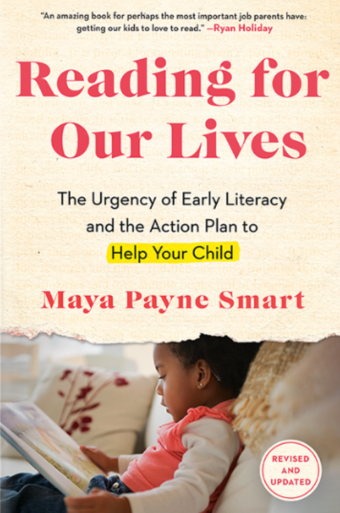
Are you looking for ways to motivate your child to read more? If so, you’re not alone. Many parents want to encourage their small child to listen to more read-alouds or try new books. And many more struggle to get their kids to read independently or pick up a book more often.
There are many ways to foster book love and get kids to read more—like making reading a central part of a loving relationship with you, choosing books they’ll love, and limiting the distractions of screen time.
But sometimes all the pieces are in place, and they still need a little nudge to get started, to get over a hump, or to choose reading over other options. In this case, reading incentives can be just the ticket to motivate a child to turn to books more, building up the reading habit.
That’s where reading bingo comes in handy. It’s a fun and playful way to encourage more book time.
Why Reading Bingo is a Great Reading Incentive
A powerful way to incentivize kids to do anything is to turn it into a game. Finding playful ways to encourage positive behaviors pays off two-fold: in the behavior and in strengthening your parent-child relationship.
After all, kids love games and they love challenges—challenges they can conquer, that is. This playful challenge is the power of reading bingo for kids.
Of course, you can also throw in a little additional incentive in the form of simple rewards for completing the bingo challenge if needed. We’ll get into tips on good rewards to use (Hint: no iPads!) later in this post.
But first, let’s look at how to get started playing reading bingo.
How to Play Reading Bingo
To play reading bingo, all you need is a grid filled in with a set of reading-related challenges for your child. When they complete a challenge, they get to cross off the square or color it in. Each time they cross off five squares in a row, they win or “get bingo.” Eventually, they can complete the full card.
First, you’ll need a bingo card. As part of our mission to promote literacy for all, the Maya Smart team has created a free reading bingo card you can print at home, available to all our email subscribers.
Our reading bingo card contains 25 challenges for kids to complete, all aimed at turning reading into a game, from “read outside” and “read about animals” to “try a new book.” It’s written to work equally well for parents reading aloud to little ones and for young children reading on their own.
The game includes an intentional mix of challenges designed to get kids to:
- read more
- stretch their reading habits in new directions, and
- engage more with others around books.
Alternatively, you can easily create your own DIY reading bingo card—you’ll find suggestions for tailoring a reading bingo card just for your child later in this post.
Once you have your card, help your child read the challenges and pick an easy one to start them off with success. You might also help them come up with realistic goals about how often they hope to check off squares.
How to Use Reading Rewards to Motivate Reading
The challenge of completing the reading bingo game can be enough to get kids to pick up a book. However, you can also offer a reward for completing the bingo challenge if your child needs an extra push.
You can offer rewards for getting bingo, for completing a certain number of squares, or for completing the full card.
If you do decide to offer your child one or multiple rewards, it’s best to keep these as simple, healthy, and age-appropriate as possible. No need to buy them an iPad or shower them with candy for reading a book.
In fact, rewards don’t have to be material or financial at all. Instead, brainstorm things they enjoy or that make them happy, including special privileges or time together.
The key is to make the reward something that feels special, so think about privileges or outings that they don’t usually get. That can mean getting to play something they love with you (especially if it’s something you usually avoid or are too busy for) or taking them somewhere they love that you don’t visit often.
Even better, get them involved in coming up with their own privileges. Give them a few examples to get the ball rolling (before they start requesting a Nintendo Switch), and then ask for their ideas.
Ideas for Reading Rewards
Below are some examples of positive, age-appropriate reading rewards for young children to get you started. All these can grow with your child, encompassing new areas as they reach new ages and stages.
Special Privileges
- Choosing the family dinner
- Selecting a game to play together
- Picking the movie for a movie night
Special Time
- One-on-one time with a parent
- A special play date
- A game or movie night
Special Outings
- Going to a favorite park
- Taking a family bike ride
- Playing their favorite sport
Create a DIY Reading Bingo Card
Want to make your own reading bingo game? The first step is to think about your—and your child’s—goals. Is the main purpose just to get them to read? Or do you want them to try new topics, pick up specific books, or challenge themselves in a certain way?
The answers will inform what challenges you include on your reading bingo card. You might just come up with fun or goofy ways or places to read (upside down! in the bath!) to motivate more reading. Or you might challenge them to read certain books or stretch themselves somehow, such as tackling a more difficult book or a specific reading level. You can also include challenges like reading a particular number of books or pages in a given timeframe, or reading for a set length of time.
Just be sure to offer a mix of fun, doable challenges alongside ones your child will find more difficult, and make sure all the challenges are realistic for your child. After all, this is meant to be fun. (If they’re struggling too much, they may be lacking the necessary skills or need outside help.)
For maximum buy-in, have your child work with you to come up with the challenges and then let them write or decorate their own bingo card. (Our free reading bingo card has pictures for kids to color in.)
Whatever your child’s goals, the playful challenge of reading bingo can motivate them to get started. To make sure they stick with it, though, stay involved. Cheer on their successes, laugh with them, and share your own enthusiasm for books and reading. Your love is the secret ingredient that can elevate reading bingo or any other activity from blah to blessed. Have fun!
Like this post? Please share it!
Parents are uniquely positioned to help kids build reading and writing skills that are best developed little by little over many years. So a central tenet of the Maya Smart approach to raising readers is helping children learn through what we like to call everyday literacy. This can mean pointing out words on cereal boxes and chatting about letters on street signs. It can mean including reading and writing in family travel and road trips, or emphasizing words on kids’ clothes. It can mean working literacy skills into special occasions, to make a celebration like Halloween a reading holiday, for example. And so much more.
In line with this idea, we decided to make it easy to mix reading and writing practice into another important activity with children: feeding them. Let’s face it, making and serving endless meals and snacks is an ever-present element of parenting. And bringing the kids into the action, by inviting them to cook with us, is both a great activity in its own right and a time-tested way to up the odds they’ll actually eat what we prepare.
That’s why we created the Read with Me Recipe series of kid-friendly snacks and meals that are super easy to make with kids—presented in a format that’s also easy to read with kids. Think simple words and short sentences that will set your little one up for success. What’s more, each recipe is optimized to highlight a specific spelling pattern or reading ability, so you can introduce and reinforce key skills in small, playful doses with each dish you make.
The idea is for you to print out the recipe and then read it with your child as you prepare a simple, frustration-free dish together. Each one comes with teaching tips for using the recipe to build specific knowledge and skills with beginning readers. That said, you can also use these recipes with pre-readers, as a way to introduce them to written language. Just read the recipe aloud to them and draw their attention to some of the elements, such as any incidences of their first initial or another letter they may recognize. (Scroll down for more tips on using the recipes to teach.)
*Important note: Adults should be closely involved in the cooking, from chopping to using a hot stove, to ensure safety.
MayaSmart.com’s exclusive kids’ cookbook PDF includes the full collection of Read with Me Recipes. You’ll find a variety of simple snacks and meals popular with kids and even some special holiday recipes. Here are the dishes inside (plus the skills they’re optimized for):
- Cake in a Cup: Silent E
- Carrot Hummus: Double Consonants
- Cheese and Chicken Pasta: CH Digraph
- DIY Christmas Ornaments: Letter C
- Cool Fruit Smoothie: Double OO
- Easter Egg Bread: Long and Short E
- Latke Potato Pancakes: Compound Words
- Roasted Pumpkin Seeds: Double EE and OO
- Strawberry Sticks: ST Consonant Blend
- Stuffed Shell Pasta: SH Digraph
- Three Bean Salad: TH Digraph
- Yogurt Bark: Y as a Consonant (and Vowel)
Here’s how to use the recipes:
- Print out the recipe (or bring it up on a screen large enough for easy reading).
- Look at it together and draw your child’s attention to the specific spelling patterns or words highlighted in the teaching tips for that recipe, if your child is ready for it. If they’re ready, encourage them to find and circle or underline all the incidences of the specific pattern.
- Read and follow the recipe together. Watch out for any words they may not be familiar with, and give a simple definition.
- If they’re taking the lead on the recipe, be ready to gently help with any words they struggle on. For example, if they have trouble reading applesauce, try covering half the word and help them sound out one half at a time, then put both together.
- Bring your patience. Give your child space to figure out words or identify letters before you jump in, but be prepared to help if they’re showing signs of frustration.
- For little ones who aren’t reading yet, just read each step out loud, pointing to the words as you go.
- If they don’t know their ABCs yet, point out a few key letters in the recipe, like their first initial. Ask questions: Can you find a letter T? What letter does this word start with?
- If your child knows their letters but isn’t reading, point out some simple words to them, or help them try sounding out some of the simplest words.
- You can also use the recipe as an opportunity to introduce or reinforce punctuation. Point out and explain the use of periods, commas, or other punctuation marks.
Bon appétit!
P.S. If your child loves cooking, you’ll definitely want to check out our roundup of great picture books about cooking for kids. Each one includes a recipe to try out with your little one, too!
Is your little one struggling with reversing the letters b and d? If so, you’re not alone. It’s a very common challenge because—let’s be real—the two letters look just alike. Both have a long line and a curve. The difference is just their orientation on the page.
But that doesn’t mean parents should be passive about addressing b and d reversal. Luckily, the solution is simple too: Spend some time focusing your child’s attention on how the letters are made, giving them opportunities to write or make the letters (including with playdough, sand, or other tactile letters), and (most importantly) talking about their differences.
The time your child spends thinking about, discussing, and forming the letters makes a huge impact. With daily practice (for just a few minutes), these tried-and-true activities may help kids get b and d straight within just a few weeks. Plus, the exercises will feel like play, not like addressing a problem.
Show and Tell – Start at the beginning by showing your little one how to correctly form the letters. Narrate the starting point, the sequence, and the stroke direction. Get a blank piece of paper, white board, or tool of your choice, and have your child watch you write a lowercase b. Describe what you’re doing by saying, “This is a little b. I write it by drawing a long line down and then circling around to add the curve. See the long line here (tracing from top to bottom) and see the curve here.”

Then have your child write a lowercase b. Make sure they form it correctly, starting in the upper left and drawing down, then curving around. Don’t assume that they know this. Kids sometimes start with the curve or from the bottom of the letter. If needed, demonstrate the flow again, while describing it: “Start here. Go here. Then here.”
While they are writing it correctly, narrate what’s happening again. “See how you made the long line here (tracing from top to bottom) and then added the curve here? That’s a little b.”
Then do the same for d. Note: This does not have to happen in the same session or sitting. You can facilitate opportunities to compare and contrast the letters anytime, so don’t rush if your child isn’t yet solid with lowercase b alone.
Have your little one watch you write a lowercase d. Describe what you’re doing by saying, “This is a little d. I write it by drawing a little curve then drawing a long line down beside it. See the curve (tracing the curve from top to bottom) and see the long line here. You have to make a little c and turn it into a little d.”

Then have your child write a lowercase d and make sure they form it correctly, starting with the curve. Watch carefully to make sure they’ve got the starting point, sequence, and stroke right. If needed, demonstrate the flow again and while describing it: “Start here. Go here. Then here.”
Have them write it a few times and narrate the process as they go.
Once your child has some practice naming and writing both letters, ask them:
- Where do you start writing little b?
- Where do you start writing little d?
- What’s the same about the parts that make up little b and little d?
- What’s different about how you write little b and little d?
Give Them a Hand
If your child knows that B comes before D in the alphabet (Thank you, alphabet song!), you can use that knowledge to give them a handy tool for highlighting the different orientation of the lines and curves in the two letters. Have them make a couple of okay signs but with the raised fingers held together. The hand signal create open space within the curve and long lines just like the letters. See the photo below. (Incidentally, you can also use this to teach them how to set a table. Bread plate on the left. Drink on the right.)

Tap their left hand and tell them that’s the B hand, because it’s first (as they look at their own hands) and B comes before D. Then tap their right hand and tell them that’s the D hand, because it’s second. Don’t use the words left and right. That just adds another layer of complexity to the exercise. The point here is to get them to focus on the letter shape, pay attention to the lines and curves, and give them the proper name.
Once they’ve got this down, they can always make the shape with their hands and compare that against the printed letter to know if they are looking at a B or a D or to check their own writing.
Make Your Bed
An advanced technique is to teach using the word “bed.” Only use this with kids who can blend common letter sounds into simple words. Draw a side view of a bed with head and foot boards and superimpose lowercase B and lowercase D over it. See diagram.

If your child continues to struggle with this after you’ve spent considerable time working on it and they are nearing 7 years old, then it’s time to seek out additional support. In very rare instances, the letter reversal may be a sign of visual processing or memory issue, so talk to your child’s pediatrician or seek out support through your local school district if the problem persists.
Like this post? Please share it!
Picture this: A stage set with a seven-foot tall book, a bank of soaring windows revealing downtown Milwaukee’s skyline, and an energetic crowd of businesspeople, educators, and philanthropists.
Just days before my book Reading for Our Lives toasted its first anniversary, I was at this event to be honored as a Champion for Literacy by former NBA stars and Marquette University basketball legends Dwyane Wade and Travis Diener.
No ordinary honor roll, this celebration was part of a sporting three-day Wade vs. Diener showdown, where the pair faced off to do the most for local children. They leveraged their famously competitive spirits to outdo one another in raising funds and awareness for vital youth programs, including the Tragil-Wade Johnson Summer Reading Program at Marquette.
From the stage, I looked around and saw an impressive group assembled. Without exception, the donors and attendees were people with many accomplishments and abilities–including the crucial but easily overlooked skill of able, fluent reading.
They were the kinds of people who can graduate from college, navigate the workforce, buy homes, vote in elections and (mostly) understand the bonds, levies, and referendums listed on the ballot. The kind of people who attend fundraising events for important programs like this one.
In many ways, the attendees’ successes were very apparent. What no one could see, though, were the thousands of relationships and experiences that contributed to all of our reading (and life) success. No one could see the parents or grandparents who read to us. The early caregivers who gave us the words to describe our environments, thoughts, and emotions. The teachers or tutors who painstakingly taught us to connect sounds and letters.
And that’s part of the challenge of ensuring literacy for all. There’s so much that goes into reading success that we don’t see. When we spend most of our time among readers, it’s hard to imagine the magnitude of people who struggle to make sense of street signs, product packaging, and the basic print of everyday life.
So I applaud Dwyane Wade and Travis Diener for using their platforms to highlight this challenge and raise funding to support the direct, structured teaching of reading to kids who need it most.
I thank them for creating space to grapple with this critical issue in Milwaukee, which offers a microcosm of our nation’s reading woes.
Wisconsin has the widest reading-score gap between black and white students of any U.S. state –a 50-point gap, according to the U.S. Department of Education. There’s also a 35-point gap between Hispanic and white students and a 33-point gap between lower- and higher-income students.
Only 12% of all fourth-grade students in Milwaukee (and just 5% of the black ones) read proficiently, leaving thousands on track to join the ranks of the 1 in 4 Milwaukee County adults who are functionally illiterate, per the Program for the International Assessment of Adult Competencies (PIAAC).
And we have ample research documenting the ways that low to no literacy creates a direct pipeline to joblessness, homelessness, hopelessness, poverty, crime, and pretty much every other social ill you can imagine.
That’s why efforts like the summer reading program that the event supported are so important.
How a Summer Reading Program Addresses the Crisis
The teachers, administrators, and mentors of the Tragil-Wade Johnson Summer Reading Program led by Dr. Kathleen Clark do incredible work to serve dozens of children.
This summer, they assessed kids’ reading needs and provided tailored, structured instruction in phonics to advance each child’s skills.
To give you a sense of the need, imagine a student who entered kindergarten in the fall of 2020, after Covid hit, and had that school year completely disrupted by pandemic-wrought school closure and disruption—on top of preexisting family stress and poverty.
Imagine that child, now a rising third grader, arriving at the summer reading program not knowing the alphabet and unable to form the letter A. Imagine the feeling of defeat hanging over that child after spending three years in school and still understanding so little about our written language.
And then imagine the child’s confidence growing as they’re greeted each day by nurturing staff committed to meeting their needs. Staff with the time, resources, and know-how to help them discern the sounds within words. To help them clap out syllables and break words into sounds.
Who thoughtfully show them the connections between those sounds and letters on paper. Who hand them books well-suited to their skills and give them the gift of reading simple texts.
That’s a win. Not just for those kids, that program, or the generous funders who supported it. It’s a win for our society and collective future.





Like this post? Please share it!
Reading for Our Lives turns 1 today! And bringing this parenting book to the world has been my greatest professional accomplishment so far. It took years of research, interviews, and synthesis to get it into print. The writing itself was a bear, but so was navigating the publishing industry to find a great agent, secure a book deal, and launch—all during a pandemic.
Twelve months into my life as a published author, I’m proud to report that I made 38 speaking appearances and earned more than 100 media features related to the book, including a segment on CBS Mornings and an OpEd in TIME. The book has reached more than 5,000 parents, caregivers, teachers, and literacy advocates and garnered numerous 5-star reviews.
But don’t get me wrong, I’ve had my share of mishaps on my author journey as well. One low light was traveling 1,000 miles to a book signing where the conference bookseller forgot to order my book. Yes, seriously. Astounded, angry, and hurt, I had to muster all of my professionalism and poise to salvage what I could of that disastrous trip. I had to quiet my wounded ego and use my time on site to connect with prospective partners and reconnect with existing ones. Most importantly, I had to remind myself of why I do this work in the first place. My mission is not to sell books—that’s just a means to an end—but to send a message about our national literacy crisis and the responsibility we all share to reverse it.
With or without a book in hand, I want to help people understand the costs of allowing millions of kids to graduate high school without the literacy they need to thrive in the modern, global workforce. I want to connect the dots between low literacy and unemployment, homelessness, chronic health issues, incarceration, and so many other problems we face. I want to spur more parents to own their roles as children’s first teachers, vocabulary builders, and educational advocates.
Someone once said that we overestimate what we can accomplish in one year and underestimate what we can do in ten. I feel that in my bones. So here’s to celebrating year one wins—knowing that there’s much, much more to come!
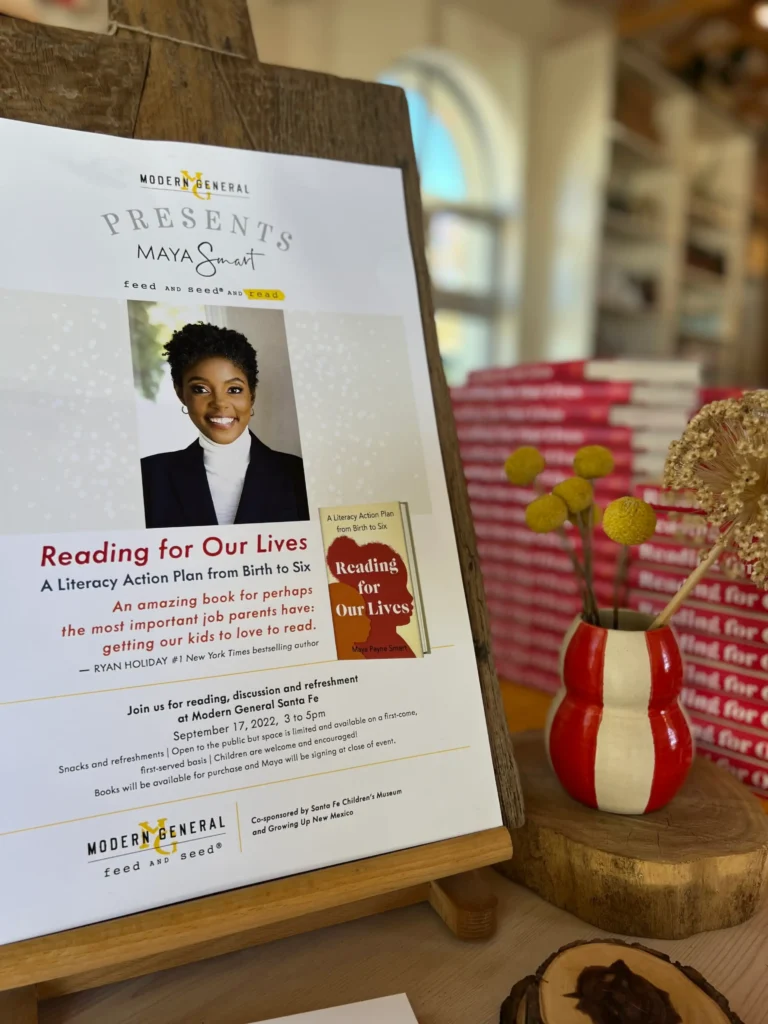


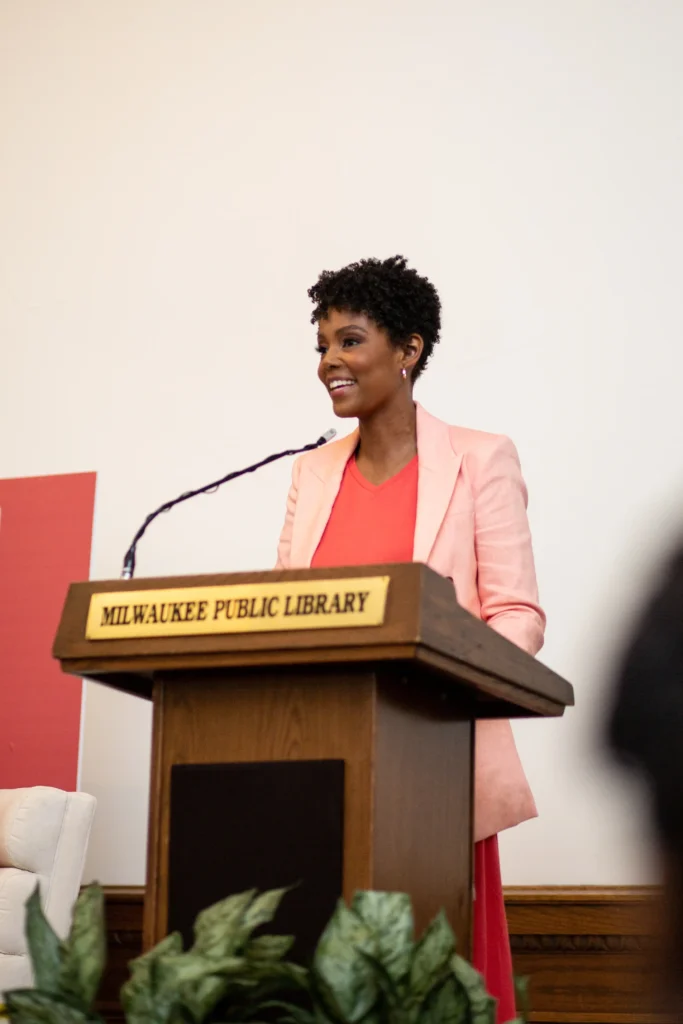
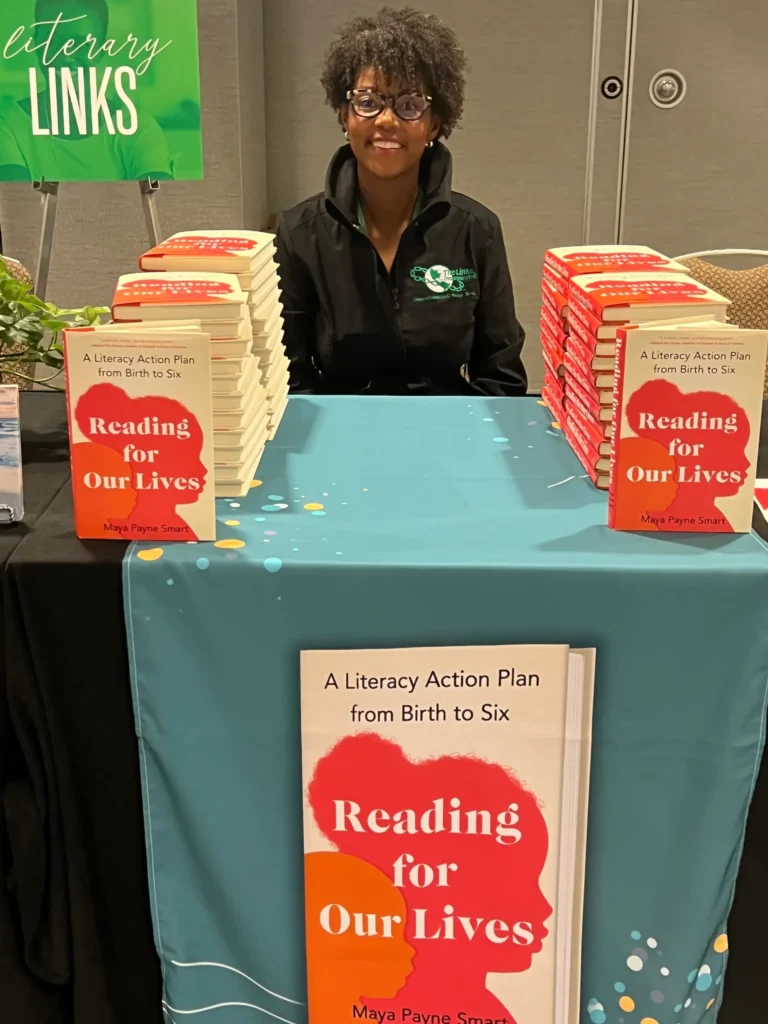
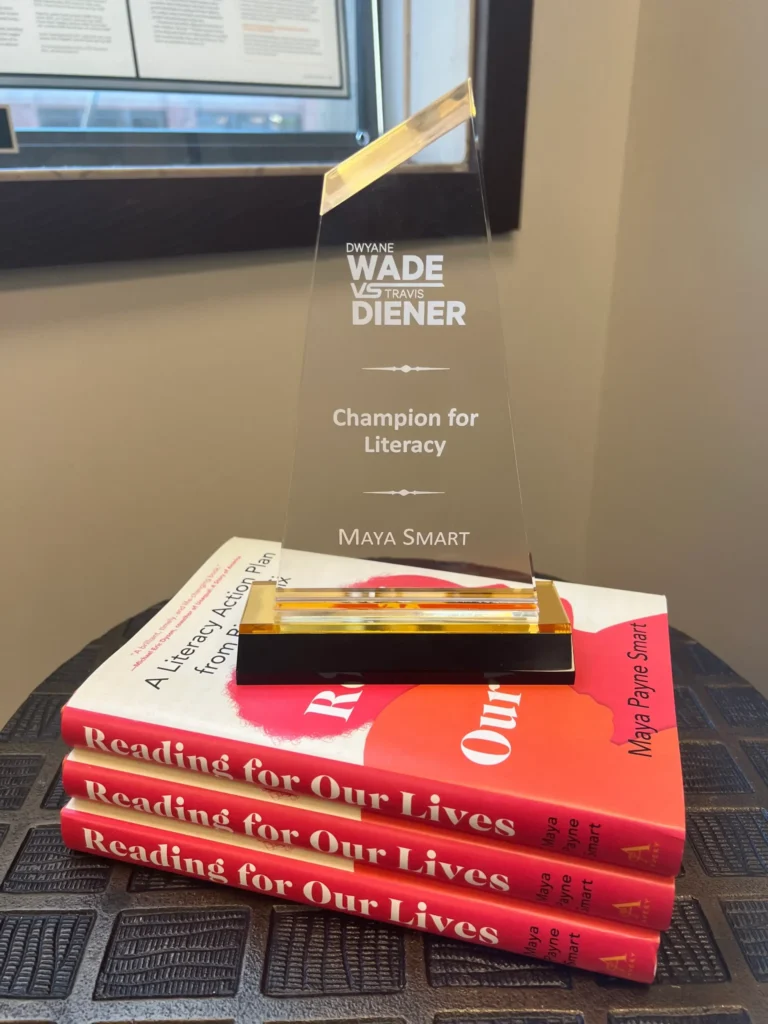
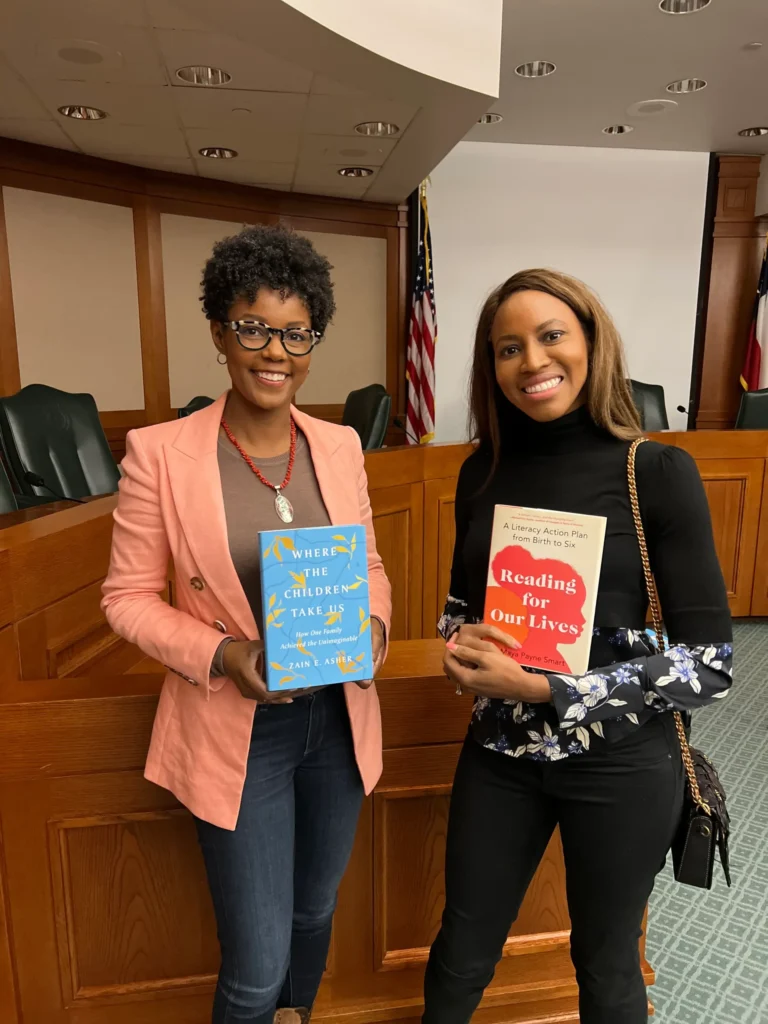




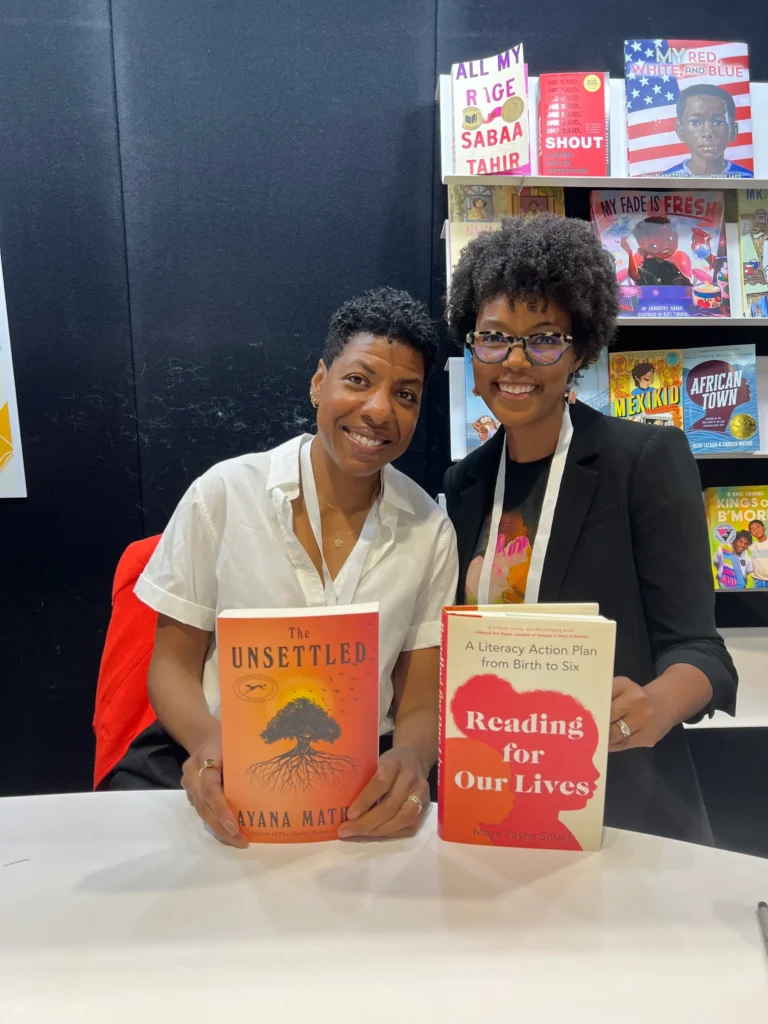
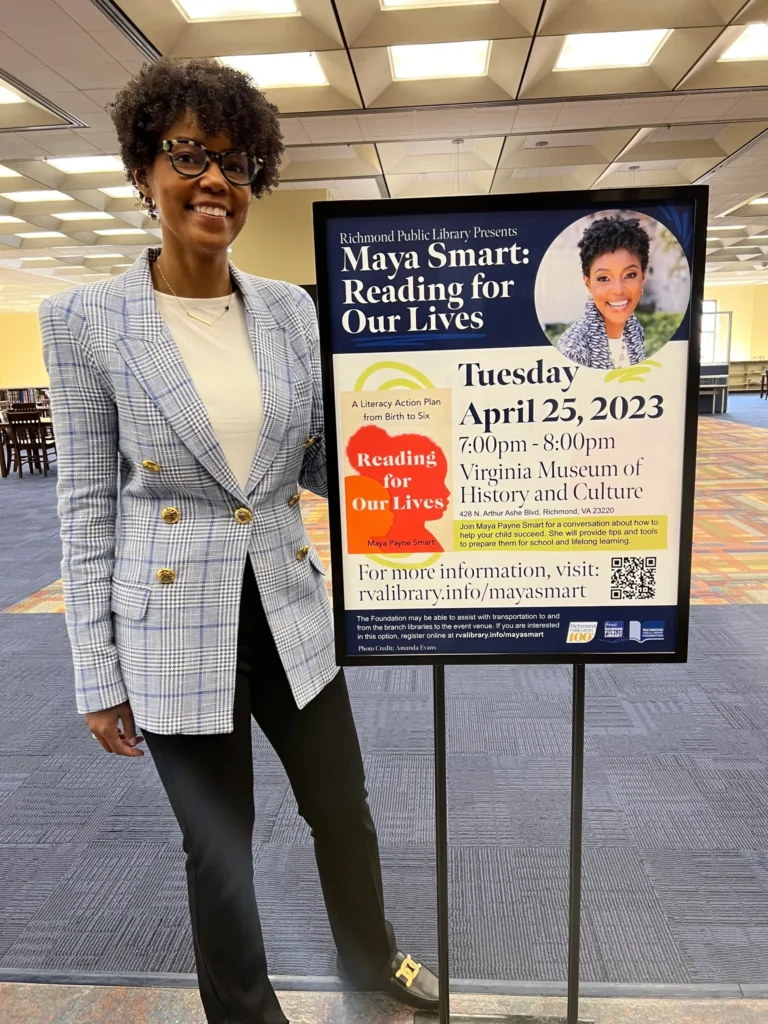
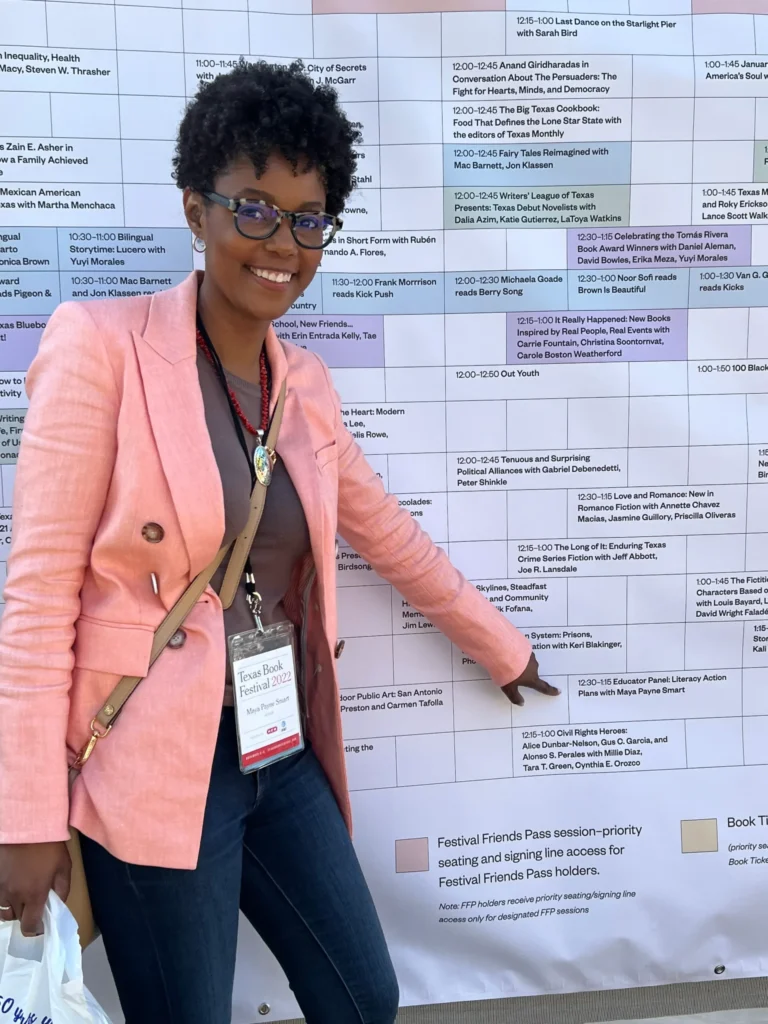
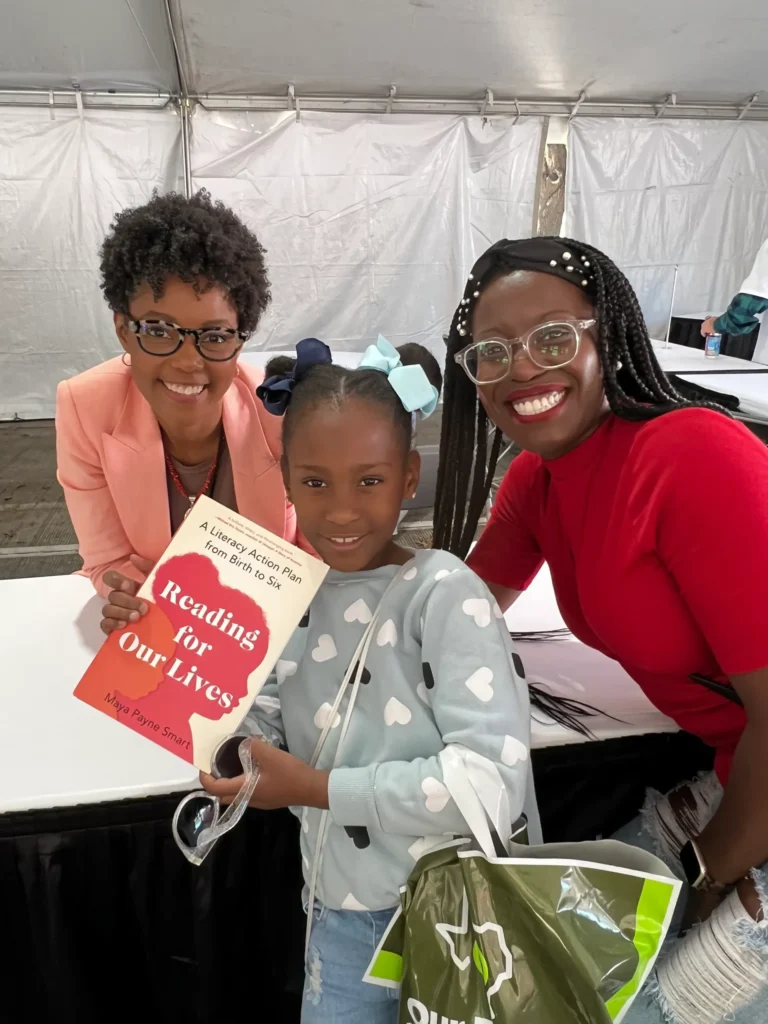
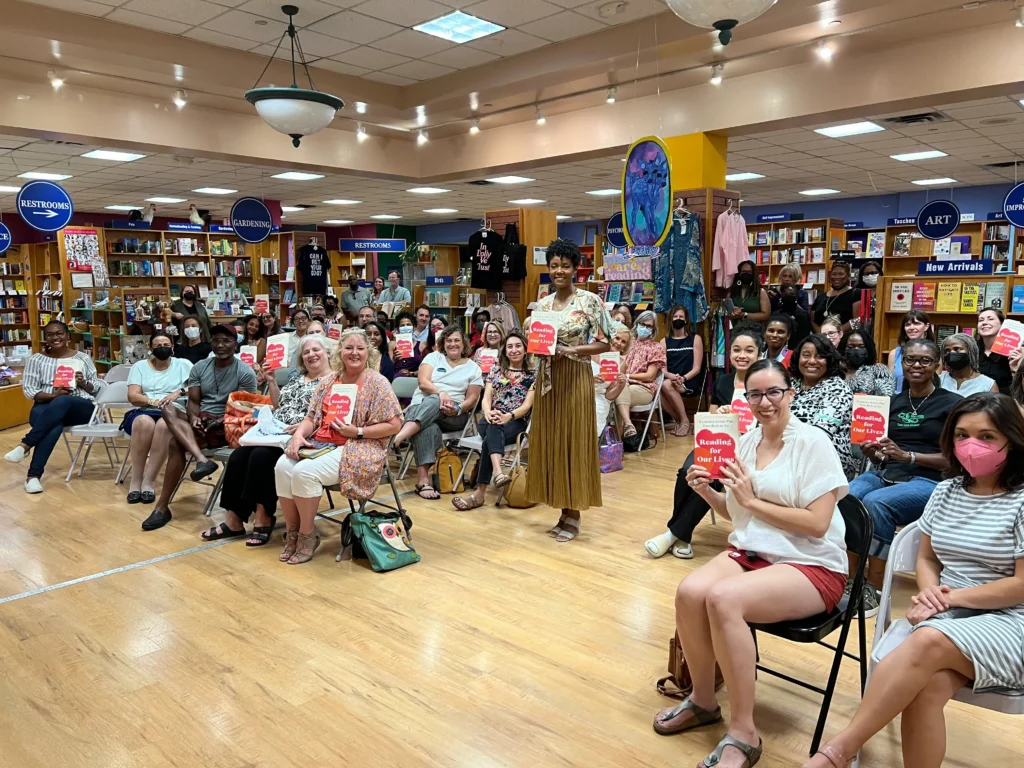
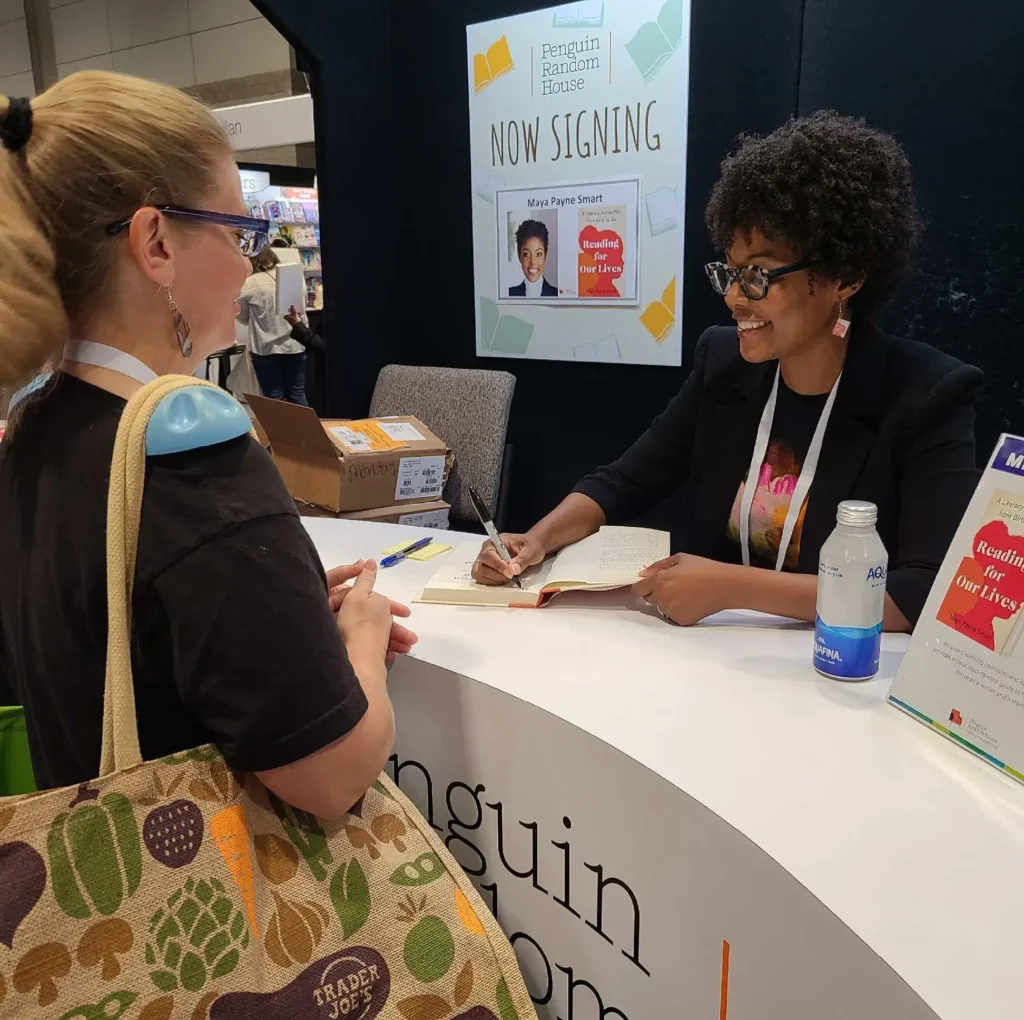
The question is not whether we can afford to invest in every child; it is whether we can afford not to.
Marian Wright Edelman
Heavy rain once filled our local water supply with so much silt and debris that treatment systems failed. Local authorities and media raised the alarm that residents should boil their water for seven days straight or risk illness. Restaurants shut down. Families bought bottled water by the shelf-full. Hospitals procured truckloads of certified water and switched operating rooms to alternative sterilization methods. Once the boil notice was lifted, we all flushed our pipes, dumped ice machines, and resumed life and work as usual.
The crisis was obvious and urgent. The response clear and immediate. The end apparent.
What’s happening with our nation’s pipeline to reading, if you can call it that, is just as urgent, yet hidden. There is no infrastructure in place to raise a nation of readers, let alone a coordinated response to breakdowns.
Judged by international standards, two disturbing findings characterize U.S. adult literacy in recent decades: basic skills are weak overall (despite relatively high levels of education) and unusually persistent across generations. About one in six U.S. adults have low literacy skills, compared to, for example, one in twenty in Japan. That’s approximately 36 million U.S. adults (roughly equal to the combined populations of New York, Michigan, and Minnesota) who can’t compare and contrast written information, make low-level inferences, or located information within a multipart document. And, worse still, socially disadvantaged parents in the U.S., compared to those in other countries, are more likely to pass on weaker skills to their children.
There is no infrastructure in place to raise a nation of readers.
But here’s the part that all parents must understand: this crisis brews early. Much of the tragedy of low adult literacy has its roots in infancy, when early experiences launch lifelong learning trajectories. During this time, more than a million new neural connections are formed per second, and future brain development rests on the soundness or fragility of those earliest links. In fact, evidence from anatomical, physiological, and gene-expression studies all suggest that basic brain architecture is in place by around two years old and later brain development is mostly about refining the major circuits and networks that are already established. And, critically, it’s caregivers’ nurturing, supportive back-and-forth verbal engagement in a child’s first years that literally stimulates brain function and shapes brain structure.
For too long, as a nation we’ve tested school-aged kids, reported the results, and acted like oversight is a reading achievement delivery system. But literacy doesn’t flow from federal mandates through state assessments and district policy to classroom instruction and students’ brains. Standardized assessments are valuable, but limited, alert systems. Mere indicators, they can sound when our educational system fails to meet certain expectations. But they don’t illuminate the root causes of that failure or tell us what to do about them. Alarms ring; they don’t teach. And often when an alarm rings for too long, we tune them out.
Today, alarms abound. In the U.S., 5-year-olds have “significantly lower” emergent literacy than kids in other countries that have comprehensive early-childhood education and national paid parental leave. In a 2019 reading assessment, only one-third of a nationally representative sample of U.S. fourth- and eighth-grade students scored at a proficient level. Reading scores of the lowest performing 9- and 13-year-olds have dropped since 2012. And—most devastatingly—just 14 percent of U.S. 15-year-olds read well enough to comprehend lengthy texts, handle abstract or counterintuitive concepts, and evaluate content and information sources to separate fact from opinion.
And don’t even get me started on the state of children’s reading interest and enjoyment. National surveys reveal skyrocketing percentages of 13-year-olds who say they “never or hardly ever” read for fun—29 percent in 2020, compared with 8 percent in 1984. The sad truth is this: for the past few decades, the majority of American kids have been shuffled from grade to grade without ever reading well enough. And we’re not talking about children with profound learning or intellectual disabilities. These are capable students whose reading development is hobbled by a devastating mix of untapped opportunity at home and inadequate instruction in schools.
Incredibly, that’s despite the fact that elementary schools devote more time to English, reading, and language arts than anything else—often more than 30 percent of instructional time. Teachers struggle to meet the diverse needs of learners who arrive in their classrooms with little knowledge of the alphabet, the sounds of English, and the relationships between letters and sounds. They have trouble instilling these basics, let alone expanding the oral-language development, vocabulary, and background knowledge that allows kids to decode and comprehend words in print.
We can’t afford to continue pretending that a hodgepodge of reactivity and remediation can get millions of children reading well enough to flourish. We can’t leave whole populations without the skills, knowledge, and community support that underpin full participation in society and expect things to turn out well for them or for us. We all suffer when we don’t muster the collective will, skill, and integrity to ensure that every child learns to read.
To attain the consciousness, solidarity, and equity our society so desperately needs, we must be informed and deliberate in nourishing early literacy. So, too, if we are to engender the level of citizenship, critical thinking, and limitless potential that our children and society deserve. And because the odds of success are set before school begins, we’ve got to start at home.
Parents and early caregivers hold the key. Period. We will never see the promise of mass literacy fulfilled until parents—our children’s first teachers—understand how reading skills develop and how to spur them along.
Premium Fuel
Parents are often said to be kids’ first and best teachers. The “first” part is guaranteed, but the “best” part must be earned. When it comes to literacy, evidence (not intuition) is the best way to judge what works.
Literacy is one of the most-studied topics in academia. There were already more than one hundred thousand studies on how children learn to read in 1999 when Congress convened the National Reading Panel, and the number has continued to climb. A search for the phrase “reading development” in the National Library of Medicine’s biomedical database finds more than 2,500 papers published in 2021 alone. Conferences, publications, and whole careers are devoted to bridging the divide between what research in linguistics, psychology, cognitive science, and education tells us about how reading develops and the practical matter of sparking and accelerating these developments in children.
To attain the consciousness, solidarity, and equity our society so desperately needs, we must be informed and deliberate in nourishing early literacy.
When parents engage with good research and allow it to inform our decisions and behavior, we benefit from the wisdom of evidence and analysis that’s far more revealing than our individual experience or perspective alone. Recent discoveries in neuroscience, molecular biology, and epigenetics alongside years of behavioral and social sciences insights can also boost our empathy by giving us deeper insight into the child’s environment and experience. I know I always feel better about my decisions as a mom when they marry responsiveness with effectiveness. I want to do not only what feels right, but also what works.
Routine Maintenance
Becoming literate is considerable work for a child’s growing brain, but nurturing it doesn’t have to be. Beginning in infancy, parents can foster literacy with warmth, responsiveness, dialogue, and turn-taking. Over time these practices can become core habits and make a lasting impact. These are everyday strategies to help you find the perspective and build the muscle needed to relate to your children with intention, consistency, and generosity over the long haul.
The fact is, once parents know what the research says about what kids need (and when), there’s a practical matter of doing those things day in and day out… for years. For that, we need parent-tested and -approved techniques that are easy to fit into busy lives. Putting the time and energy into establishing strong practices early on can rev up lifelong benefits and prevent costly breakdowns.
Roadside Assistance
A lot of parenting media treats families as islands. Read this and teach that, the books advise, and your child will learn. But in reality, reading develops within a dynamic web of relationships and experiences.
Parents need ongoing support from community members, including friends, family, neighbors, teachers, librarians, and others, to keep their kids on track. There’s often also a role for the just-in-time intervention of specialists, from speech and hearing therapists to learning and reading experts, depending on a child’s particular needs. This is the equivalent of roadside assistance.
But we’d be foolish to take a back seat, given the indisputable evidence of our power to launch a child’s literacy. Every child deserves full literacy to thrive, and instilling the strongest possible base prior to school gives a child a real shot at gaining the skills and knowledge they‘ll need long term.
When I was growing up, my dad always told me to front-load my effort. He said, “Work as hard as you can to learn as much as you can as fast as you can.” That way, when inevitable distractions and unforeseen circumstances arrived, I’d have some wiggle room. Starting strong creates a chance at recovering from setbacks. So it goes with your child’s literacy: you will never find a better time than now to launch a reader.
Edited and reprinted with permission from Reading for Our Lives by Maya Payne Smart, published by AVERY, an imprint of Penguin Publishing Group, a division of Penguin Random House, LLC.
Copyright © 2022 by Maya Payne Smart.
Enjoyed this excerpt? Get the book!

